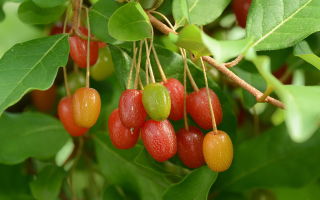Content
The beneficial properties of gumi berries help to normalize health in case of inflammatory diseases and skin ailments. Before using the fruits of the multiflorous oak and other parts of the plant, you should familiarize yourself with its features.
What it looks like and where it grows
Multiflorous oak tree, or gumi (Elaeagnus multiflora), is a deciduous shrub, less often a tree, from the Loch family up to 2 m tall. It has a branched surface-type root system, the shoots of the plant are covered with small thorns. The leaves of the loch are elliptical, with a solid edge.
In mid or late May, the shrub produces small white flowers with a pleasant, strong aroma. Approximately 45 days after pollination, the fruits ripen - oblong-oval berries up to 2 cm long, green-yellow at the beginning of development and red by the time of full ripeness. Inside the pulp there is one large bone with a grooved surface. Gumi berries are edible and can be consumed both raw and after processing. Also, the multiflorous oak tree is a good honey plant.

The plant is found naturally in China, Japan and Korea. In Russia, the multiflorous oak tree is artificially cultivated on Sakhalin. The shrub loves well-lit places; in favorable warm conditions, it may not shed its crown for the winter and remain dormant for only about a month. Fruiting usually begins after five years of life.
Chemical composition
Photos of gumi berries and their beneficial properties are of increased interest in traditional medicine. There are many valuable substances in the fruits, as well as in the green parts of the shrub. Namely:
- vitamin C;
- mineral salts;
- tannins and tannins;
- amino acids;
- zinc and copper;
- pectins;
- selenium, potassium and sulfur;
- Sahara;
- fiber and flavonoids;
- calcium and manganese;
- chlorogenic acid;
- chrome, nickel and bromine.
All parts of the plant are suitable for medicinal use. Depending on the specific disease, you can prepare decoctions and infusions from the fruits, leaves or buds of gumi.
The benefits of multifloral sucker
The valuable properties of the multifloral sucker strengthen the body and improve the condition for many ailments. Medicinal plant:
- boosts immunity and protects against viruses and colds;
- has a tonic effect and gives energy;
- reduces the temperature in case of influenza and ARVI and eliminates general intoxication of the body;
- strengthens the heart system and makes the walls of blood vessels more elastic;
- lowers blood cholesterol levels and prevents the development of atherosclerosis;
- accelerates the healing of wounds and cuts when applied externally;
- improves digestion and intestinal peristalsis;
- can help treat diarrhea due to its strengthening properties;
- has a calming effect and relieves stress;
- helps with increased nervous excitability and insomnia;
- improves blood circulation and stimulates the brain;
- eliminates muscle pain and migraine.
Decoctions and infusions on the multifloral sucker have strong anti-inflammatory properties.They can be used for ailments of the musculoskeletal system, the funds relieve swelling and pain, and restore normal mobility to the joints.
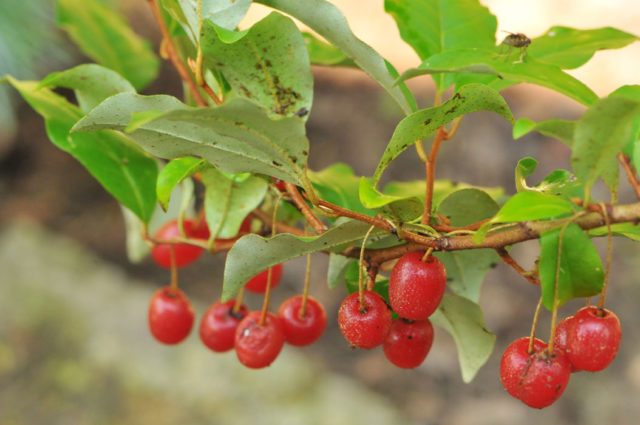
The benefits of gumi berries
The beneficial properties of gumi bush berries are valued in folk medicine above all. The fruits not only have a pleasant taste, but also affect the body as a natural medicine. It is allowed to use preparations made from fresh or dry sucker berries:
- with indigestion and pain in the stomach;
- with liver ailments and a tendency to edema;
- with poor circulation;
- with chronic fatigue and increased anxiety;
- with rheumatism, gout and arthritis;
- with weakened immunity;
- with parasites.
Basically, on the basis of berries, water and alcohol compositions are prepared that require strictly dosed use. But any desserts made from fruits of the multifloral sucker also have useful properties - jams, preserves, compotes. You can use them both for pleasure and for healing the body.
Application in traditional medicine
In folk medicine, flowers, fruits and leaves of gumi are used mainly to improve digestion and for pain in joints. There are several recipes for decoctions and infusions of multifloral sucker with good efficiency.
With intestinal parasites
Gumi berries inhibit the vital activity of parasites in the intestines and help to quickly remove them from the body. The multifloral goose has a particularly good effect in combination with pharmaceutical anthelmintic drugs. A decoction for internal use is done as follows:
- Measure out two large tablespoons of the fruit and pour a glass of hot liquid.
- It is kept in a water bath for half an hour.
- Remove from the stove and cool under a closed lid.
- Filter through folded gauze and add another 250 ml of pure water.
The resulting decoction of berries is taken warm, 30 ml up to four times a day. When effective, it does not harm the intestines or impair digestion.
With weakened immunity
To increase the body's resistance, you can prepare a strong tincture of gumi berries and flowers. The recipe looks like this:
- 50 g of berries are mixed with an equal number of plant flowers.
- Pour raw materials 1 liter of good vodka in a glass vessel.
- They are sent for infusion in a dark cool place for a month.
- At the end of the period, filter the product.
- Add 30 g of natural honey to the solution and mix thoroughly.
- Pour the tincture into clean containers.
It is recommended to use a product based on berries and flowers, 5 ml three times a day with water. Since the drug is made on the basis of alcohol, it should be taken without interruption for treatment and prevention for no more than two weeks.
With colitis
With intestinal colitis, a decoction of the buds of the multifloral loch is beneficial. The tool is prepared according to the following recipe:
- 6 g of dried flowers are poured into 250 ml of hot liquid.
- Warm up in a water bath for 20 minutes.
- Remove the product from the stove and allow it to cool under the lid.
- Filter the solution and add boiled water to the initial volume.
You need to drink the medicine for 1/3 cup three times a day on an empty stomach. The decoction will also be beneficial for fever caused by the common cold, hypertension and arrhythmias.
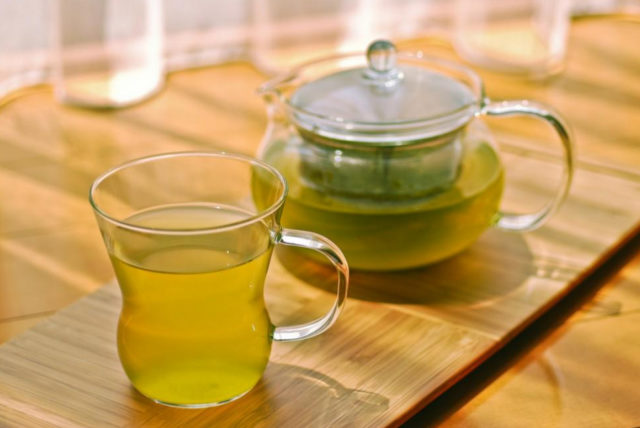
For wounds and cuts
The multiflorous oak tree has strong anti-inflammatory properties. The berries of the plant can be used to create a decoction to help heal skin lesions. Traditional medicine offers the following recipe:
- Pour two large spoons of berries with a glass of heated water.
- Bring to a boil and simmer over low heat for five minutes.
- Remove from the stove and leave under the lid for two hours.
The strained agent is used to rinse cuts, ulcers and suppurations. You can also moisten a cotton pad or gauze bandage in the solution and apply a compress to the affected area.
With rheumatism
The multifloral sucker is good for relieving inflammation and pain in rheumatism, arthritis and gout. For medicinal purposes, the following infusion is made:
- 10 g of dry buds of multifloral loch are poured with 500 ml of liquid.
- Heat in a water bath for a quarter of an hour.
- Pass the finished product through cheesecloth.
- Insist until cool and add clean water to the original volume.
The drug should be consumed three times a day, 120 ml on an empty stomach. You can also use a warm solution for compresses on sore joints up to four times a day.
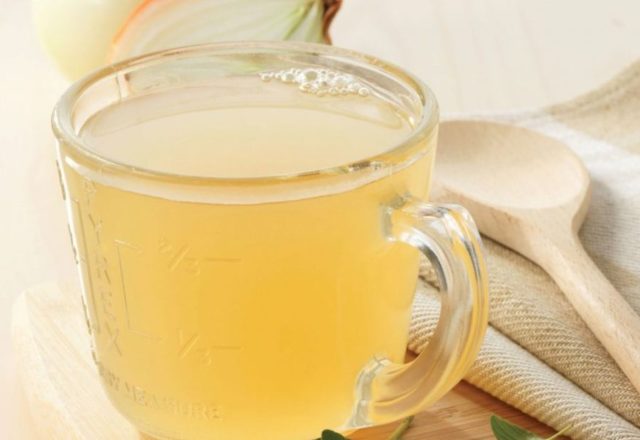
Cooking applications
Healthy gumi berries have good taste. They can be consumed unprocessed after ripening, but even more often the fruits are used to create blanks. In this case, even in the winter season, gumi berries help maintain immunity.
On the basis of the fruits of the multifloral sucker, you can cook:
- compotes and fruit drinks;
- preserves and jams;
- homemade wines with fruit and berry taste and aroma;
- strong alcoholic liqueurs with alcohol and vodka;
- sweet and sour sauces for meat and fish dishes.
Contraindications to the use of gumi berries
The benefits and harms of the multi-flowered sucker gumi depend on the characteristics of the organism. It is impossible to use herbal remedies:
- during pregnancy;
- during breastfeeding;
- in the presence of plant intolerance or individual components;
- with diabetes.
It is necessary to use products based on berries, leaves and buds of the multifloral sucker strictly in the dosages indicated by the recipes. In addition, you should not take uncontrollably fresh gumi fruits and treats prepared from them, in too large quantities they can cause indigestion.
Collection and procurement
Gumi berries must be picked from the middle of summer as they ripen. The fruits begin to ripen in July, and the process continues for about three weeks. Ripe berries do not crumble, but they can be easily removed from the branches. At the same time, one adult bush in good conditions gives an average of about 1.5-2 kg of fruit.
For fresh consumption, the berries of the multifloral sucker should be rinsed in cool water. They are stored in the refrigerator for a week. Also, the fruits can be immediately sent for processing or prepared for medicinal purposes. In the latter case, it is permissible to use two methods:
- drying - washed berries should be spread out in a thin layer on pallets and left under a canopy in the shade until they darken and wrinkle, and then put into paper bags or glass jars;
- freezing - clean fruits are also spread on a baking sheet and sent to the freezer for several hours, and then packaged in bags and stored again at low temperatures.
Dried berries of the multifloral sucker retain their beneficial properties for about a year. It is better to store frozen fruits no longer than six months, then their value begins to decline.
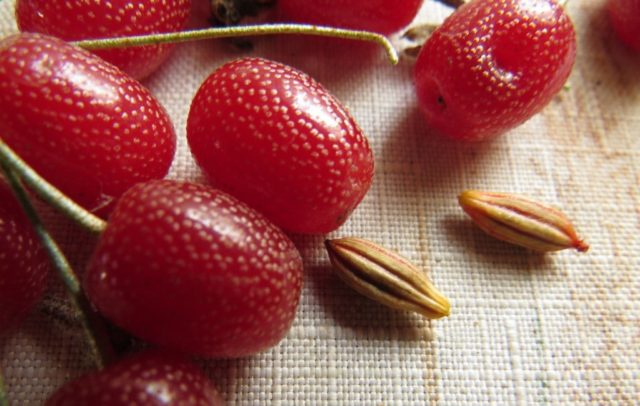
Conclusion
The beneficial properties of gumi berries help improve digestion and are beneficial for joint ailments. Healing decoctions and delicious desserts are made on the basis of the fruits, plant buds are used to create infusions with anti-inflammatory effects.

